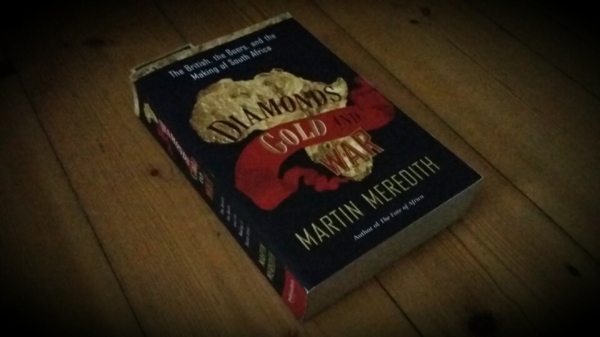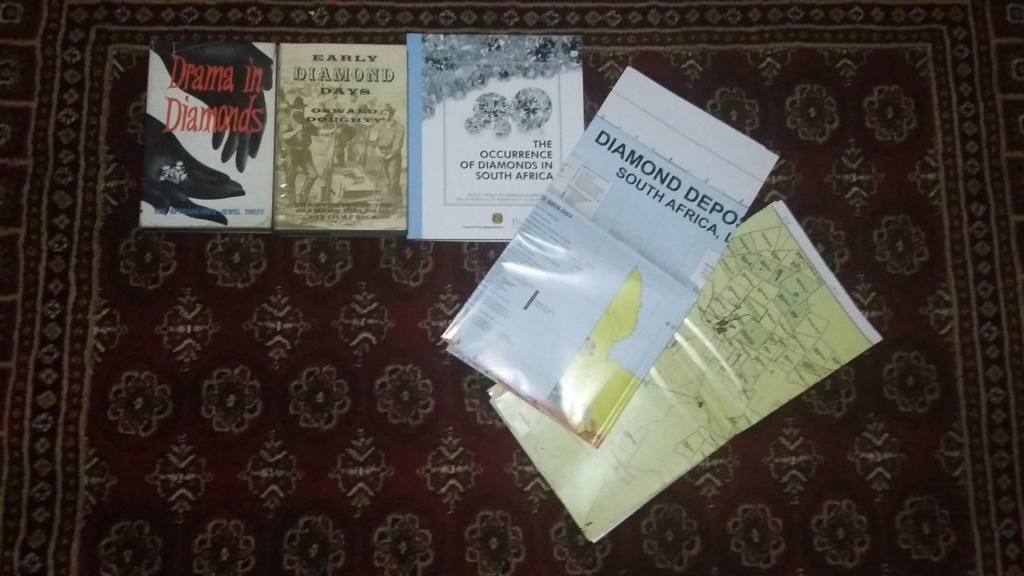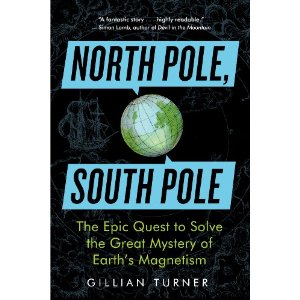
Earlier this week I shared a picture of a few books on diamonds that are on my current reading list. I’ve also mentioned in a couple of previous posts that I’d like to share with you a little information about some of the geology-themed books that I’ve read recently.
Today I’ll be blogging about the first book, which is titled Diamonds, Gold, and War: The British, the Boers, and the Making of South Africa. The book was published in 2007 and was written by Martin Meredith, a journalist, biographer, and historian who has also written several other non-fiction books about Africa, such as Mugabe: Power, Plunder, and the Struggle for Zimbabwe’s Future and The Fate of Africa: From the Hopes of Freedom to the Heart of Despair. Meredith has also written an intriguing looking book titled Born in Africa: The Quest for the Origins of Human Life that I’ve just added to my reading list – so perhaps I’ll review that book later in the year!
I read Diamonds, Gold, and War (hereafter abbreviated as DGW) over a couple months last year. The book is thick, so it took me a few airplane trips and many nights at home to read through. Although it took me awhile to read, without a doubt DGW is the most interesting and important book that I read last year. The book provides a detailed account of key events in South African history focusing on the 1870s to the 1910s. During this time period, rich deposits of diamonds and gold were discovered and developed into mines, kicking off the modern economic development of the region and a legacy of mining that continues to be important to the South African economy to this day. Some of the mineral deposits that were first discovered in South Africa over a hundred years ago are still being mined in today. Several large mining companies, such as De Beers, were founded in South Africa during this time period. However, while the rich mineral deposits played an important role in the economic development of the country, they also led to a fierce battle to control the new-found riches. At the turn of the century, the British battled the Afrikaner Boers for control of southern Africa, waging a costly and bloody war that badly affected both parties. In addition, businessmen such as Cecil Rhodes schemed to dominate the mining industry, ruthlessly forcing aside the competition. During this time period, South Africa’s mineral wealth was largely controlled by a few individuals, who often exploited their mine workers and who did not put much emphasis on health and safety standards, considering mine injuries and deaths to simply be part of the cost of doing business.
Here’s an excerpt from the book’s introduction:
“… in 1871, prospectors exploring a remote area of sun-scorched scrubland in Griqualand, just outside the Cape’s borders, discovered the world’s richest deposits of diamonds. Britain promptly snatched the territory from the Orange Free State. Fifteen years later, an itinerant English digger, George Harrison, stumbled across the rocky outcrop of a gold-bearing reef on a ridge named by Transvaal farmers as the Witwatersrand. Beneath the reef lay the richest deposits of gold ever discovered. The gold strike transformed the Transvaal from an impoverished rural republic into a glittering prize.
What followed was a titanic struggle fought by the British to gain supremacy throughout southern Africa and by the Boers to preserve the independence of their republics. It culminated in the costliest, bloodiest and most humiliating war that Britain had waged in nearly a century…
Two men personified the struggle: Cecil Rhodes and Paul Kruger. Rhodes, the son of an English country parson, used his huge fortunes from diamonds and gold to promote the expansion of the British empire as well as his own business interests… Paul Kruger, the Boer leader and landowner, whose only education was the Bible and who believed the earth was flat, defied Britain’s prime ministers and generals for nearly a quarter of a century.”
DGW covers a fascinating and important time period in South Africa’s history. The book is thoroughly researched and contains several pages of historical pictures and maps. Although the book is long (570 pages) and a little cumbersome at times, overall it is extremely readable – it’s not dry history at all. The book is full of rich detail and anecdotes. In particular, Meredith paints a vivid picture of Cecil Rhodes and Paul Kruger, two of the most influential – and also the most controversial – figures of the time period. Meredith also paints a vivid picture of the early days in the mining towns of Kimberly (diamonds) and Johannesburg (gold).
Personally, the book was an important one for me to read. I’ve been living in South Africa for nearly five years. During this time period, I’ve worked as a geologist in both the diamond and gold industries. Fortunately, the mining industry in South Africa looks quite different today than it did back in the late 1800s and early 1900s. Today, mining companies are much more socially responsible, and there is also a great emphasis placed on the health and safety of employees. The modern South African mining industry isn’t perfect, but it has come a long, long way. I found it extremely valuable to read DGW in order to better understand the origins and complex development of South African’s mining industry. In addition, I found it fascinating to read about how deposits of diamonds and gold were first discovered and developed in South Africa. Fortunately, Meredith’s descriptions of geology are fairly accurate, as history books go! I didn’t spot any glaring geological errors or omissions.
Overall, I highly recommend reading DGW. The book provides a wonderful example of how geology influences history. The discovery of rich mineral deposits in South Africa played a key role in shaping the country’s history and continues to shape the country to this day. If neither diamonds nor gold were discovered in South Africa, the country’s development would likely have taken a radically different path, for better or for worse.


